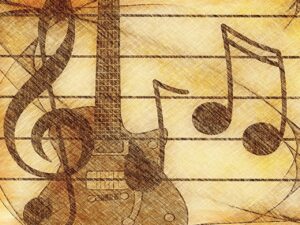The Battle of Frequencies: 432 Hz vs. 440 Hz for Your Well-Being
In the world of music, the standard tuning for the note A is 440 Hz. But did you know that this hasn’t always been the case? For centuries, many cultures used a different tuning, centering on 432 Hz. This article explores the historical shift from 432 Hz to 440 Hz and examines the claims about how these two different frequencies can impact our bodies and minds, from promoting healing to causing stress.
432 Hz: The Frequency of Nature and Harmony
The 432 Hz frequency is often called the “frequency of the universe” or the “frequency of nature” because of its perceived connection to the natural world. Ancient Greek philosophers like Plato, Aristotle, and Pythagoras were well-versed in the healing power of music and its effect on the human body. They believed that music could be used to restore balance and heal ailments.
It’s believed that the 432 Hz frequency resonates with the human body’s natural vibrations, particularly the water within our cells. This resonance is thought to have a cleansing and harmonizing effect, promoting a sense of calm and well-being. Many people who listen to music tuned to 432 Hz report feeling more relaxed, less stressed, and more connected to the world around them.
440 Hz: The “Demonic” Frequency of Discomfort
In stark contrast to the harmonious 432 Hz, the 440 Hz frequency has been labeled by some as the “demonic frequency” due to its alleged negative effects on the human body. It is often described as feeling sharp, aggressive, and even stressful. Critics of the 440 Hz standard claim that it can increase anxiety, promote a feeling of fear, and weaken the body over time, making people more susceptible to illness.
While these claims are often a subject of debate, many listeners who are sensitive to sound report feeling a noticeable difference. They often describe 440 Hz music as feeling discordant or less pleasant to listen to compared to its 432 Hz counterpart.
A Controversial Shift in History

The global adoption of 440 Hz as the standard for musical tuning is a fascinating and controversial piece of history. In the early 20th century, there was a movement to standardize musical pitch. In 1910, with significant backing from influential financial figures, the international standard was changed from a variety of tunings, including the widely used 432 Hz, to 440 Hz. This change was formalized in 1953 by the International Organization for Standardization (ISO).
Many believe this shift was a deliberate attempt to weaken the human spirit and make people more compliant. Regardless of the intentions behind the change, the historical fact is that our modern world of music is built on a frequency that is fundamentally different from the one that has been used for healing and harmony throughout much of human history.
Summary
The debate between 432 Hz and 440 Hz is more than just a matter of musical preference; it’s a discussion about the energetic impact of sound on our lives. While 440 Hz is the modern standard, many people are turning back to the ancient 432 Hz for its reported healing and harmonizing benefits. The key takeaway is to be mindful of the sounds you listen to and to choose frequencies that make you feel good.






